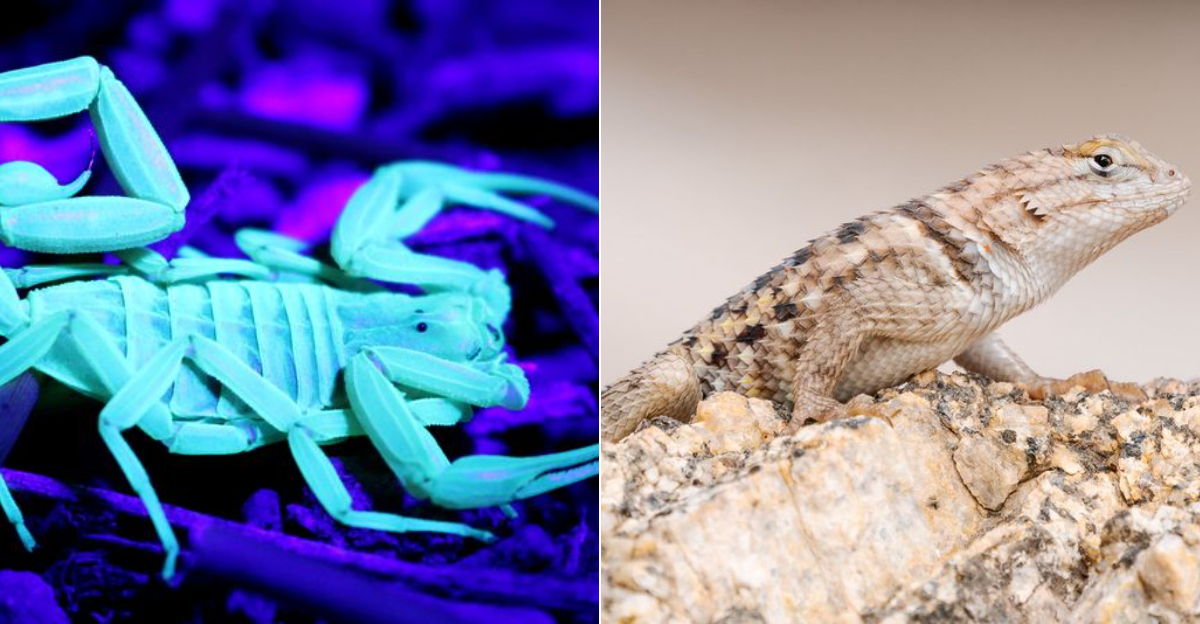Arizona’s sun-baked landscape hides a secret world teeming with life. Just flip over a rock, and you’ll discover a miniature ecosystem of creatures that have adapted to survive in the harsh desert conditions.
These remarkable animals have developed fascinating strategies to beat the heat, from nocturnal lifestyles to specialized body features.
Let’s peek under those desert stones and meet some of Arizona’s most intriguing rock-dwelling residents!
1. The Gila Monster
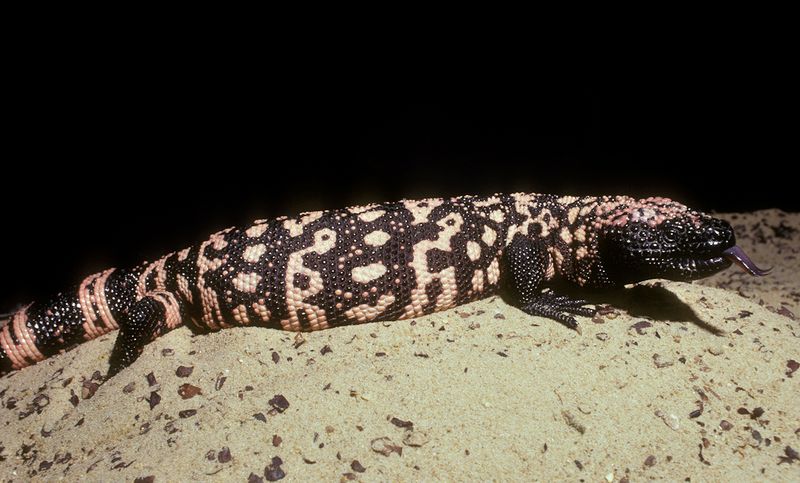
Orange and black beads of color make the Gila Monster look like it’s wearing prehistoric jewelry. This venomous lizard spends up to 95% of its life underground or tucked beneath rocks, emerging mainly during the brief desert rainy season.
Despite their fearsome reputation, these chunky reptiles move with all the urgency of a retiree at an all-you-can-eat buffet. Gila Monsters store fat in their tails like living survival kits, allowing them to go months between meals.
When they do eat, they gorge on eggs, baby mammals, and other small creatures. Their venomous bite isn’t fatal to humans but delivers pain that victims have described as feeling like someone set their body on fire.
2. Arizona Bark Scorpions
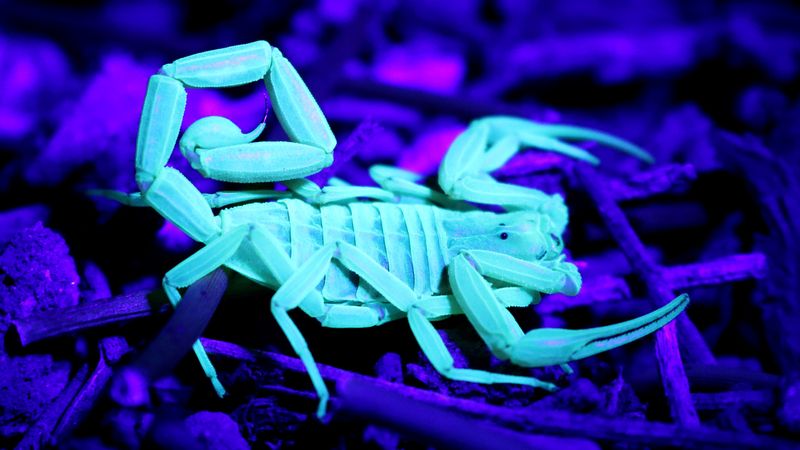
Squeeze a blacklight flashlight into your next desert hike pack, you’ll need it to spot these fluorescent arachnids! Arizona Bark Scorpions glow an eerie blue-green under ultraviolet light, making nighttime scorpion hunts a popular (albeit cautious) tourist activity.
These paper-thin predators can squeeze through cracks as narrow as a credit card, making rock piles their perfect hideout.Masters of the upside-down lifestyle, they often hang from rock undersides, waiting to ambush passing insects.
Their painful sting packs a serious punch, though rarely fatal to healthy adults. During scorching summer days, entire colonies huddle together in cool, moist rock crevices, creating writhing masses of tails and pincers.
3. Tarantulas
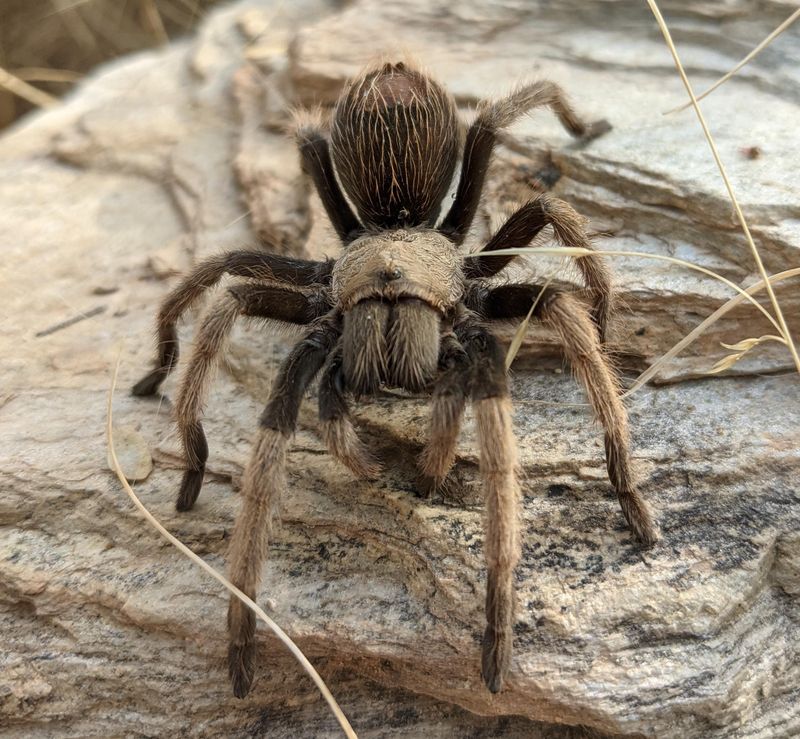
Contrary to their horror movie reputation, Arizona’s desert tarantulas are the teddy bears of the arachnid world. Males often wander the desert floor during monsoon season in search of mates, while females typically stay home in burrows beneath rocks.
These fuzzy eight-legged architects can live up to 30 years, though males typically die shortly after mating—talk about commitment issues! Their defensive hair-flicking behavior might seem comical, but those tiny barbed hairs can cause serious skin irritation.
Desert hikers frequently encounter these palm-sized spiders crossing trails at dusk. Despite their intimidating appearance, tarantulas would rather retreat than fight, using their impressive size and hairy legs primarily to scare off predators rather than to attack.
4. Desert Spiny Lizards
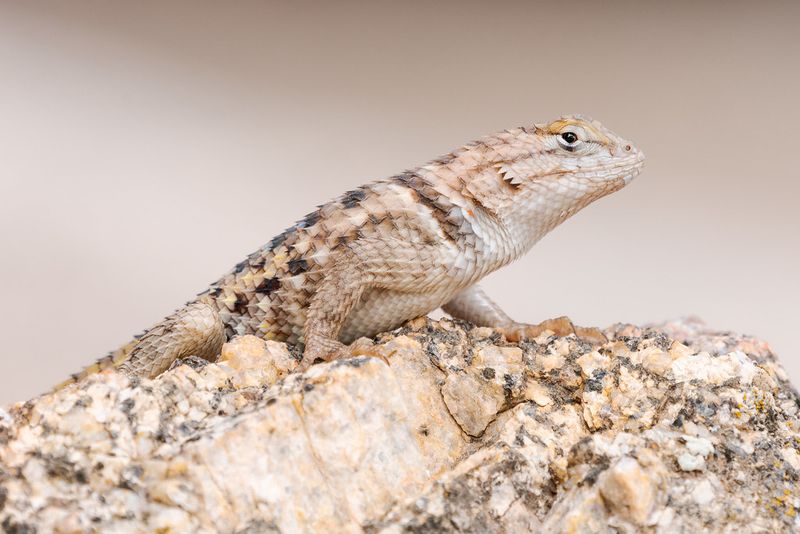
These muscular little show-offs perform rapid push-ups not to build strength but as a territorial display and to regulate body temperature. Their spiky scales create a medieval knight appearance, providing protection from predators and helping retain moisture in the dry desert air.
Rock piles serve as their personal jungle gyms, where they sprint with surprising speed to catch insects. Males sport brilliant blue patches on their bellies and throats during breeding season, nature’s version of peacocking.
When temperatures soar above 100°F, these lizards perform a peculiar high-stepping dance on hot surfaces, minimizing contact time with the scorching ground while dashing between shady rock shelters.
5. Pocket Mice
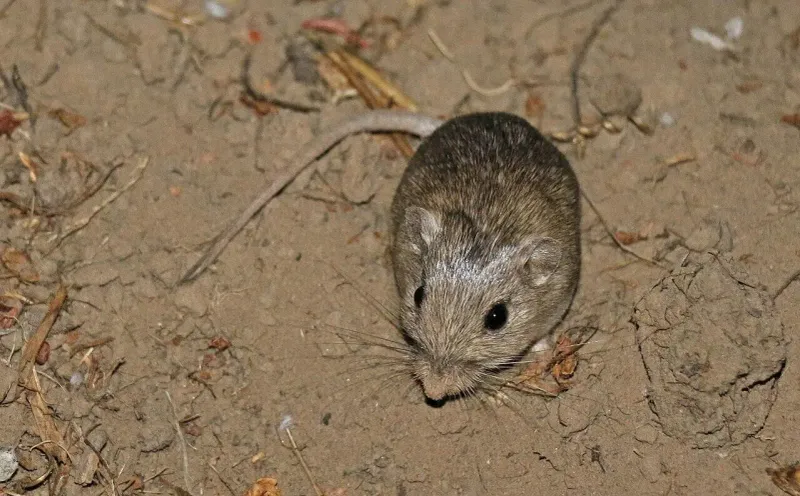
No water? No problem! Pocket mice have evolved to survive without ever taking a drink. These adorable thumb-sized rodents extract all the moisture they need from the seeds they consume, converting starches into water through a metabolic magic trick.
Their name comes from the fur-lined cheek pouches they stuff with seeds like tiny shoplifters at a bulk food store. By day, these miniature marvels snooze in elaborate burrow systems beneath and between rocks. Their oversized hind feet allow them to hop kangaroo-style across the sand when foraging at night.
Desert predators struggle to catch these zigzagging speedsters. Most amazingly, pocket mice can slow their metabolism during food shortages, entering a torpor state where they essentially press their internal pause button until conditions improve.
